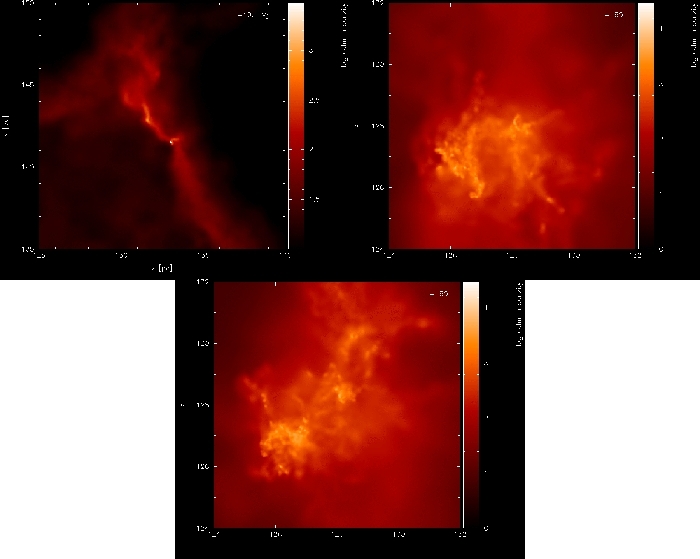| EPoS Contribution |
|
Star Formation by Hierarchical Gravitational Fragmentation
Enrique Vazquez-Semadeni CRyA-UNAM, Morelia, Mexico | |
| I will discuss numerical evidence that regions of massive star formation may be the final stage of the collapse of an initially large cloud fragment, so that, rather than being massive turbulent cores in approximate virial equilibrium, they are in a collapsing state, accreting at a high rate from their surroundings, and forming stars at a much higher specific rate (~ 0.1/Myr) than the average of the molecular gas in the Galaxy. I show that such regions in numerical simulations of cloud formation by colliding streams of warm, diffuse gas and their subsequent evolution, match the observed physical conditions of massive star-forming regions very well. Nevertheless, these regions may have small values of the star formation efficiency per free-fall time, SFE_ff ~ 4%, because of the large accretion rate onto the region, which counteracts the gas depletion by star formation. I conclude that future theories of the star formation rate and massive star formation should take into account the gas accretion rate onto the the clumps and forgo assumptions of near equilibrium. | |
 | |
| Caption: Three images of the formation of a low-mass (top left) and a high-mass (top right [edge-on view] and bottom [face-on view]) star-forming region by hierarchical gravitational fragmentation within a simulation of GMC formation and evolution. The physical conditions in these regions are compared to the conditions in actual star-forming regions, finding very good agreement. The top left panel spans 15 pc on a side, while the top right and bottom panels span 8 pc on a side (click to move to the animation page). | |
| Collaborators: Gilberto Gomez, CRyA-UNAM, Morelia, Mexico Javier Ballesteros-Paredes, CRyA-UNAM, Morelia, Mexico A. Katharina Jappsen, Cardiff, UK Ralf S. Klessen, ITA, Heidelberg, Germany |
Key publication
Suggested Session: Massive Stars, Molecular Clouds |

